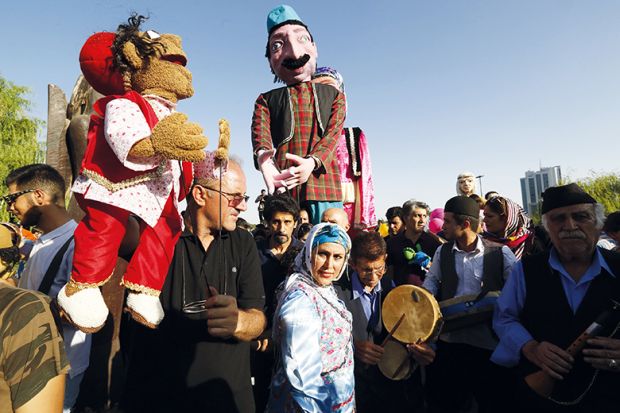Iran has unveiled plans to triple the number of international students in the country to 320,000 by 2026 – an idea that academics say has more in common with hot air than reality.
The country’s Ministry of Science released the proposal to attract more overseas students, seeking significant growth on the current total of around 100,000, according to the Tehran Times.
Afshin Shahi, an associate professor in Middle East politics and international relations at Keele University, said he believed the numbers should be taken with a “big pinch of salt”.
“When it comes to Iranian politics, there is often a significant discrepancy between official figures and the reality on the ground,” he said.
Although Iran “has the potential” to create an attractive learning environment, its current politics, security and economy made such a proposition “impossible”, he said.
In the decades since the Iranian revolution in 1979, its higher education sector had been “heavily securitised”, with the founder of the Islamic Republic famously calling universities more dangerous than cluster bombs, Dr Shahi said.
More recently, Tehran greenlit the acceptance of Iraq’s Shiite Hashd al-Shaabi militias and similar groups in Iranian universities, something that might nominally increase its number of “international students”, though it did no favours for Iranian universities’ reputation, he said.
On the ground, conditions are difficult, with soaring inflation and “scarce” resources for the infrastructure investment needed for universities.
Poor conditions have already led many people to leave. In 2019, nearly 180,000 educated professionals emigrated, and roughly half of university students, alumni and professors polled expressed a desire to leave, according to the Gulf International Forum, a US-based thinktank.
“These statistics hardly paint a picture of a thriving educational environment that would be attractive to international students,” said Dr Shahi.
Morteza Dehghani, an associate professor at the University of Southern California, dismissed the current plan as a “staged performance”.
“This aspiration appears to be a mere facade, given the [Islamic regime’s] inability to boost tourism, let alone achieve such an ambitious academic goal,” he said. “I find it improbable that this would ever succeed.”
It has been just over a year since the death of a young Iranian woman, Mahsa Amini, in custody. Her death sparked nationwide protests, including student walkouts across the country, Dr Dehghani noted.
Recent moves by Tehran to expunge any professors who expressed solidarity with protesters and install regime loyalists in teaching positions did not exactly endear Iran to prospective overseas students, and nor did the government’s track record of persecuting its own students, he said.
“In the past year, thousands of students found themselves subject to arrests and torture, with hundreds facing expulsion from their academic pursuits. Furthermore, degrees often seem to be held hostage and, even when students seek to depart the country, they would have to pay hefty fines to obtain their official transcripts.”
Encieh Erfani, who last autumn resigned from her post as an assistant professor of physics at Zanjan’s Institute for Advanced Studies in Basic Sciences, echoed the sentiment.
“The whole programme looks like a joke. I cannot even confirm that Iran has 100,000 international students. Even 10,000 is a big number,” she said.
She said that Iran had established overseas religious schools – with some giving themselves the name “university” – in several places since the revolution, giving it a foothold in some parts of Europe and as far afield as Australia.
But these bore little resemblance to proper institutions of learning, she said. “In a totalitarian system, everything is corrupted, even science and education.”
Register to continue
Why register?
- Registration is free and only takes a moment
- Once registered, you can read 3 articles a month
- Sign up for our newsletter
Subscribe
Or subscribe for unlimited access to:
- Unlimited access to news, views, insights & reviews
- Digital editions
- Digital access to THE’s university and college rankings analysis
Already registered or a current subscriber? Login








